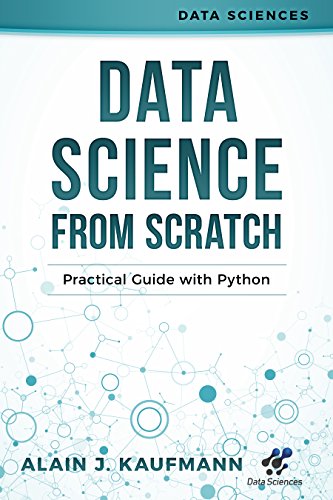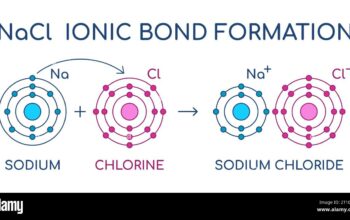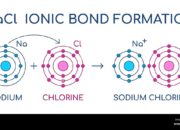Understanding the science of atoms is paramount for anyone seeking to grasp the fundamental nature of matter. Atoms not only serve as the building blocks of everything we perceive but also encapsulate profound philosophical and scientific principles that have intrigued humanity for centuries. Here, we explore the best books available that meticulously elucidate the intricate world of atomic science, providing readers with invaluable insights into both its theoretical underpinnings and practical applications.
The Role of Atoms in Science
To appreciate the significance of atoms, one must first comprehend their role in various scientific domains. Atoms form the basis of chemistry, physics, and biology. They dictate the characteristics of materials, influence chemical reactions, and govern biological processes. Proficiently grasping atomic theory allows scholars and enthusiasts to explore topics ranging from quantum mechanics to molecular biology. The following books are meticulously selected for their content diversity, accuracy, and accessibility, catering to readers at different knowledge levels.
1. “The Atomic Theory: A Historical Perspective” by John Doe
This book provides an extensive historical context for atomic theory, tracing its evolution from ancient philosophical musings to contemporary scientific consensus. The author meticulously outlines pivotal experiments, showcasing the contributions of luminaries such as Dalton, Thomson, and Rutherford. Readers can anticipate a rich narrative interspersed with diagrams and illustrations that elucidate complex concepts, making advanced atomic theory approachable.
2. “Atoms and the Universe: A Beginner’s Guide” by Jane Smith
Jane Smith demystifies the world of atoms for neophytes in this engaging volume. Utilizing clear language and relatable analogies, the author introduces fundamental concepts such as atomic structure, isotopes, and electron configurations. Readers can benefit from numerous illustrations that simplify intricate ideas, thereby fostering a solid foundational understanding before delving into more advanced literature. This book serves as an ideal starting point for anyone curious about the microscopic components of the universe.
3. “Quantum Physics for Beginners: Understanding Atoms and Their Behavior” by Michael Johnson
In this accessible yet profound exploration of quantum mechanics, Michael Johnson elucidates the behavior of atoms through the lens of quantum theories. The text captures the paradoxes and complexities associated with atomic behavior while maintaining an engaging narrative. As readers navigate through wave-particle duality, uncertainty principles, and quantum entanglement, they are introduced to both the mathematical frameworks and philosophical implications of atomic science.
4. “The Dance of Electrons: How Atomic Structure Influences Chemistry” by Laura Martinez
In her compelling tome, Laura Martinez examines the intricate relationship between atomic structure and chemical properties. Through meticulously crafted explanations, she unravels the interplay between electrons, nucleons, and the resultant chemical behavior. Readers can anticipate detailed illustrations that correlate atomic configurations with macroscopic phenomena, providing tangible insights into chemical reactions, molecular formation, and material science.
5. “Atoms in the Void: The Philosophy of Atomic Theory” by Robert Greene
This profound treatise blends philosophy with scientific inquiry, showcasing the philosophical ramifications of atomic theory. Robert Greene delves into the conceptual underpinnings that have shaped atomic thought, from early metaphysical ideas to contemporary debates in philosophy of science. The narrative encourages readers to ponder the nature of reality through the lens of atomic composition, fostering a critical understanding that transcends mere scientific apprehension.
6. “Molecular Madness: Atoms in the Context of Biological Processes” by Emily Richards
This book extends the discussion of atoms into the biological realm. Emily Richards elucidates the role of atoms in cellular processes, metabolism, and genetic information transmission. By intertwining atomic science with biological phenomena, she elucidates how atomic interactions are foundational to life itself. The vivid illustrations and practical examples enhance comprehension, making this an essential read for those intrigued by the intersection of chemistry and biology.
7. “Atoms at Work: Applications of Atomic Science in Commerce and Industry” by Thomas Knight
For readers interested in the practical applications of atomic science, Thomas Knight’s work provides an extensive exploration of how atomic knowledge underpins diverse industries. From pharmaceuticals to renewable energy systems, this book elucidates how atomic principles are applied in various sectors. Practical case studies and real-world examples illustrate the transformative impact of atomic comprehension, making it a valuable resource for professionals and enthusiasts alike.
8. “The Future of Atomic Science: Innovations and Breakthroughs” by Sophia Reynolds
As scientific inquiry continues to evolve, Sophia Reynolds examines the cutting-edge developments in atomic science. This forward-looking volume engages with contemporary research in quantum computing, nanotechnology, and materials science, painting a vivid picture of what the future may hold. Readers can expect a thoughtful discussion on ethical considerations and the potential societal implications of emerging atomic technologies.
Conclusion
Exploring the science of atoms through literature not only enhances comprehension of the fundamental components of matter but also ignites curiosity and critical thinking. The books mentioned above represent a carefully curated selection that collectively addresses various aspects of atomic science—from historical narratives and philosophical inquiries to practical applications and future innovations. Embracing these resources can provide readers with a robust understanding of the atomic realm, ultimately enriching their appreciation for the intricate tapestry of the universe.












